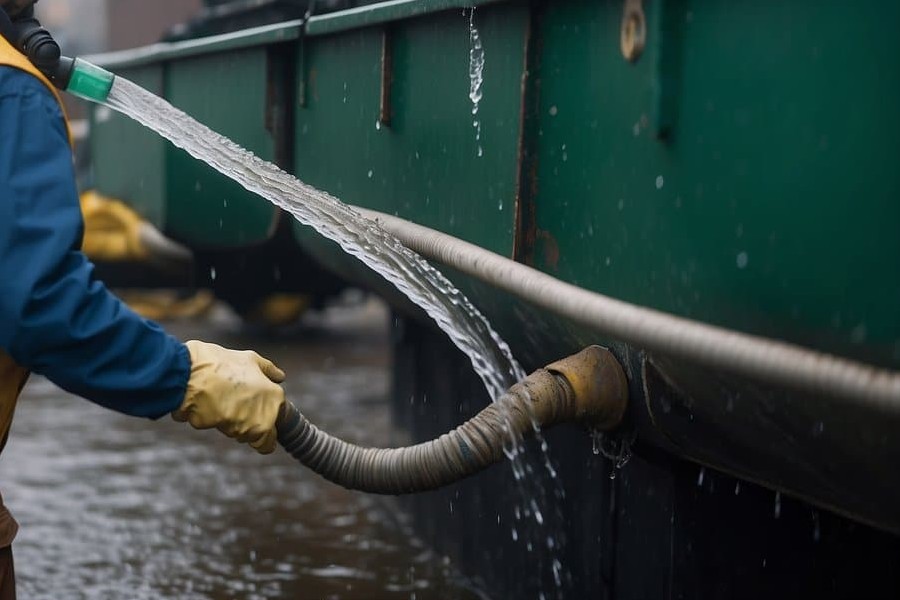
If you’re curious about what makes a milk pasteurization machine tick, you’re in the right place.
These machines play an important role in making milk safe to drink by heating it to a specific temperature to kill harmful bacteria. Key components include the UHT sterilizers, which rapidly heat milk to ultra-high temperatures within seconds.
Most pasteurizers use either steam injection or indirect heating methods to ensure rapid heating. This setup not only ensures safety but also preserves the milk’s flavor and nutrients. The milk pasteurization machine you choose will depend on your needs, whether for large-scale production or small-scale operations.
In addition to UHT sterilizers, other important parts of a milk pasteurization machine include heat exchangers and holding tubes. These parts work together to ensure that milk is heated evenly and held at the correct temperature for the necessary time. This process is essential for producing safe, high-quality milk.
By understanding these key components, you can better appreciate the sophisticated technology that goes into pasteurizing milk.
Fundamental Components of Pasteurization Machines
Milk pasteurization machines are essential in ensuring milk safety by heating it to specific temperatures. The key parts include the plate heat exchanger, balance tank, and flow control system.
Plate Heat Exchanger
The plate heat exchanger plays a vital role in milk pasteurization. It’s designed to efficiently transfer heat between the milk and a heating medium. The device consists of multiple thin, corrugated plates that create pathways for the fluid. As milk passes through these plates, it is heated quickly and evenly.
The use of thin plates increases the surface area available for heat transfer. This makes the process faster and more efficient. The plates are also easy to clean, which is important for maintaining hygiene. This component ensures that milk reaches the required temperature to eliminate harmful bacteria without significantly affecting its taste or nutritional value.
Balance Tank
The balance tank helps regulate the flow of milk into the pasteurization system. It acts as a reservoir that maintains a steady supply, preventing interruptions during the process. The tank is typically equipped with a float valve to control the milk level.
This component is necessary for continuous processing. It prevents air from entering the system, which could disrupt the heating process. The design of the balance tank ensures that it can handle varying amounts of milk, making it versatile for different production scales. It also serves as a buffer to accommodate any variations in the milk supply.
Flow Control System
The flow control system manages the speed at which milk moves through the pasteurization machine. This is essential for ensuring that the milk is heated to the correct temperature for the right amount of time. Commonly, this system includes pumps and valves that can be adjusted based on the type of milk and desired pasteurization settings.
Accurate flow control helps in achieving consistent pasteurization results. It ensures that each particle of milk is treated properly, maintaining the quality and safety of the final product. This system can also be automated, allowing for precise adjustments and monitoring during the pasteurization process.
Supporting Systems and Controls
Effective milk pasteurization relies on precise temperature control, maintaining heated milk for the right duration, and efficient cooling afterward. These systems and controls ensure the process meets safety and quality standards.
Temperature Recording and Control
Accurate temperature control is important in pasteurization. Milk must reach a specific temperature to kill harmful bacteria. Modern systems use advanced sensors and automated controls. These record and adjust temperatures continuously, ensuring consistency and safety.
Systems often have digital interfaces for real-time monitoring. Logged data can be reviewed to ensure compliance with safety standards. This minimizes human error and increases reliability.
Emergency shutdown mechanisms activate if temperatures fall outside safe limits. This prevents unpasteurized milk from reaching consumers, protecting public health.
Holding Tube
The holding tube ensures milk stays at the required temperature long enough to eliminate pathogens. This component is essential for the effectiveness of the pasteurization process.
Milk flows through a precisely designed tube, ensuring each particle gets adequate heating. The length and diameter of the holding tube are carefully calibrated.
By maintaining the right temperature and time relationship, the holding tube guarantees the destruction of harmful microorganisms. Variations in tube design cater to different pasteurization methods, like high-temperature short-time (HTST) or low-temperature long-time (LTLT).
Cooling System
Cooling systems swiftly reduce milk temperature after pasteurization to prevent any bacterial growth. Efficient cooling is required to maintain milk quality and safety.
Plate heat exchangers are common in modern pasteurization equipment. They use cold water or glycol to cool the milk rapidly, ensuring it reaches safe storage temperatures quickly.
Well-designed cooling systems conserve energy and water. They also ensure the milk retains its desired flavor and nutritional qualities after pasteurization.
Effective cooling systems include automated controls for consistent performance. These systems are integrated into the production line to streamline processes and improve overall efficiency.
Conclusion
Understanding the key components of a milk pasteurization machine is fundamental for producing safe dairy products. From heating units to temperature controls, each part plays an important role in ensuring that milk is pasteurized effectively.
Regular maintenance and proper usage of these machines can improve efficiency and product quality. By investing in reliable equipment, you can safeguard the health of consumers and maintain high standards in your dairy operations.
Photo credit: Source.
Become a Harlem Insider!
By submitting this form, you are consenting to receive marketing emails from: . You can revoke your consent to receive emails at any time by using the SafeUnsubscribe® link, found at the bottom of every email. Emails are serviced by Constant Contact










